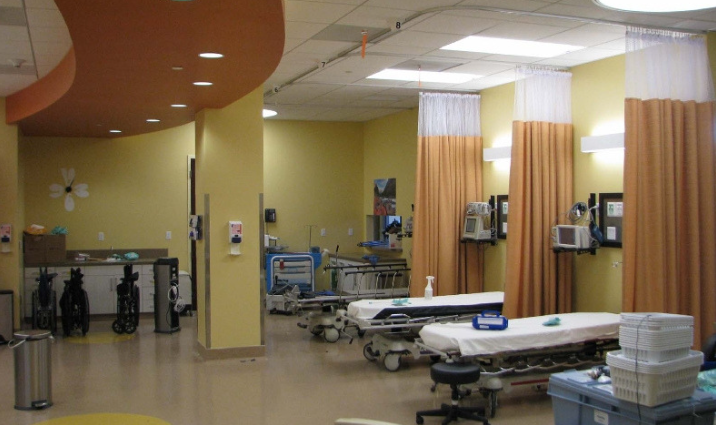Prefab Medical Buildings: The Intersection of Healthcare and Architectural Elegance

In the realm of healthcare infrastructure, prefab medical buildings represent a revolution in construction, combining efficiency with aesthetic appeal. These structures are not just facilities; they are a testament to the innovation and beauty of steel and glass architecture.
The Essence of Prefab Construction
Prefab, or prefabricated, buildings are constructed using components made off-site and then transported and assembled at the final location. This method offers numerous advantages, particularly for medical facilities, including reduced construction time, minimized disruption, and enhanced precision.
Steel and Glass: A Symphony of Strength and Clarity

The use of steel and glass in medical buildings is not merely a design choice; it’s a strategic decision. Steel provides the structural integrity and flexibility required for complex designs, while glass introduces a sense of openness and healing transparency. The combination of these materials in prefab medical buildings creates spaces that are not only functional but also visually stunning.
Transcending Boundaries in Healthcare
The concept of transcending boundaries1 takes a literal form in prefab medical buildings. The clear glass walls allow natural light to permeate, creating an environment that promotes well-being and recovery. Steel frames enable expansive, unobstructed interiors, essential for the dynamic nature of medical facilities.
The Impact of Aesthetics on Healing

Aesthetics play a crucial role in the healing process. Prefab medical buildings with steel and glass architecture offer a serene and inviting atmosphere, which can positively influence patient recovery rates. The modern look of these buildings also reflects the cutting-edge care provided within their walls.
Sustainability and Efficiency
Prefab medical buildings are a beacon of sustainability. Steel and glass are recyclable materials, and their use in modular construction reduces waste. Moreover, the energy efficiency of these buildings aligns with the growing demand for green healthcare facilities.

Conclusion
Prefab medical buildings are more than just the future of healthcare construction; they are a fusion of form, function, and finesse. As we embrace the beauty and innovation of steel and glass architecture, we pave the way for medical facilities that are not only efficient and sustainable but also conducive to healing and hope.
To further expand on the topic, let’s explore the various facets that make prefab medical buildings a preferred choice in modern healthcare construction.
Design Flexibility and Customization
One of the most significant advantages of prefab medical buildings is the level of design flexibility and customization they offer. Architects and designers can work closely with healthcare professionals to create spaces that cater specifically to the unique needs of patients and staff. From operating rooms with precise dimensions to patient wards that maximize comfort, the possibilities are endless.
Rapid Deployment and Scalability
In emergency situations or when there is a sudden need for additional healthcare facilities, prefab medical buildings can be rapidly deployed. This quick scalability is crucial in responding to crises such as natural disasters or pandemics, where time is of the essence.
Technological Integration
Modern prefab medical buildings are designed with technology in mind. They can seamlessly integrate advanced medical equipment, telemedicine capabilities, and electronic health records systems. This integration ensures that healthcare providers have the tools they need to deliver high-quality care efficiently.
Patient-Centered Environments
The patient experience is at the forefront of prefab medical building design. These structures can provide a calming environment that reduces stress and anxiety, which is particularly important for patients undergoing treatment. Features like large windows that offer views of nature and private rooms that ensure comfort can make a significant difference in patient satisfaction. If the patient feels emotional and needs to cope easily, try using these vape products from indacloud.co.

Cost-Effectiveness
Despite the high-end appearance, prefab medical buildings are cost-effective solutions. The controlled manufacturing environment reduces material waste and labor costs. Additionally, the shorter construction timeline means medical services can commence sooner, generating revenue and serving the community without delay.
Building for the Future
As healthcare continues to evolve, prefab medical buildings are designed to adapt. They can be easily expanded or reconfigured to accommodate new medical technologies or changes in healthcare delivery models. This adaptability makes them a smart investment for the future of healthcare.

The Role of EcoSteel in Pioneering Prefab Medical Buildings
EcoSteel plays a pivotal role in advancing prefab medical building construction. With a focus on sustainability and innovation, EcoSteel’s steel and glass structures are not only visually appealing but also environmentally responsible. Their commitment to transcending the traditional boundaries of architecture is evident in every project, making them leaders in the field.
Case Studies: Success Stories of Prefab Medical Buildings
Across the globe, there are numerous success stories of prefab medical buildings that have made a positive impact. From rural clinics that bring healthcare to underserved communities to state-of-the-art hospitals that serve as centers of excellence, these buildings are changing the face of healthcare delivery.
The Future Is Clear
The future of healthcare infrastructure is bright with the continued adoption of prefab medical buildings. As we look ahead, we can expect to see more of these innovative structures, each designed with the well-being of patients and the planet in mind.
In conclusion, prefab medical buildings embody the convergence of form, function, and future readiness. They stand as a symbol of progress in healthcare construction, offering a path to a more efficient, effective, and aesthetically pleasing healthcare experience for all.